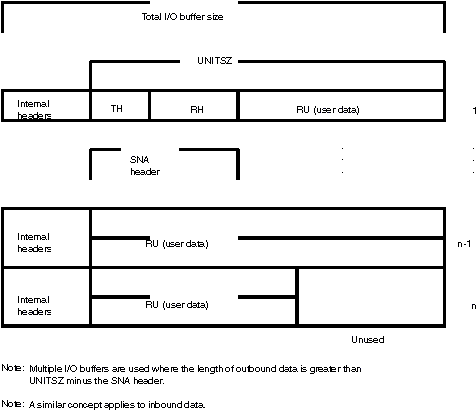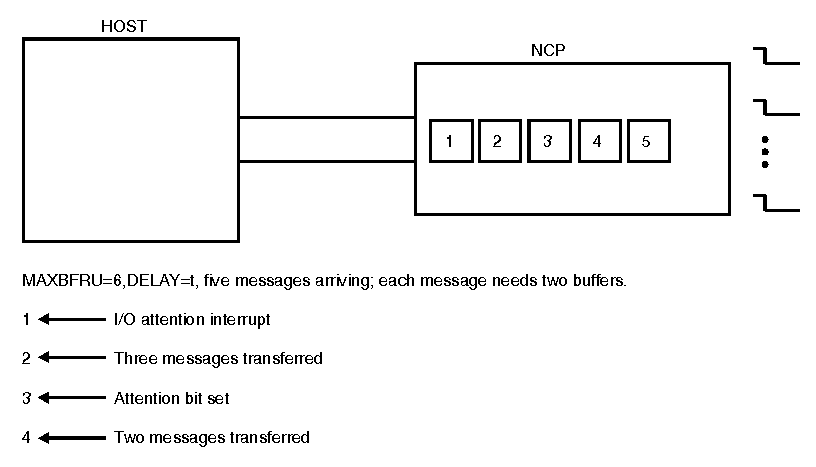 z/OS Communications Server: SNA Network Implementation Guide
z/OS Communications Server: SNA Network Implementation Guide
 z/OS Communications Server: SNA Network Implementation Guide
z/OS Communications Server: SNA Network Implementation Guide
|
Previous topic |
Next topic |
Contents |
Contact z/OS |
Library |
PDF
Guidelines for setting I/O buffer size z/OS Communications Server: SNA Network Implementation Guide SC27-3672-01 |
|
|
Choosing the ideal I/O buffer size helps minimize host storage requirements and host processor usage. Figure 1. General I/O buffer format
 Figure 1 illustrates UNITSZ. UNITSZ
is not the size of an I/O buffer; it is a portion of the buffer size.
It includes an SNA header field. In the remaining discussion, the
I/O buffer size is referred to as the UNITSZ.
Note:
One buffer
size is used for both inbound and outbound data transfers.Figure 2. Using multiple I/O buffers to transfer single
message
 Figure 2 illustrates how a message that is larger than UNITSZ spans more than one buffer. The message can be greater than UNITSZ. If it is, VTAM® uses more than one buffer to contain the message. The unused space in the last buffer is not allocated to the next message. Figure 3. Multiple-buffer considerations
 Figure 3 assumes that MAXBFRU=6 and DELAY=t and that there are five messages arriving at the NCP before the time t expires. However, it also assumes that each message requires two I/O buffers. After three messages are received, the MAXBFRU limit is reached, and the NCP signals the host with an attention interrupt. The three messages are transferred, but two more remain. Therefore, the NCP signals VTAM that there is more data to read (RDATN tuning statistic). If the RDATN tuning statistic is high, NCP has more data to transfer to VTAM than VTAM has allocated buffers to process. Therefore, you can increase the MAXBFRU specification, thus allocating more VTAM buffers to reduce this condition. However, coattailing has taken place; two messages have been transferred without having generated an attention interrupt. VTAM creates another channel program to read the remaining messages. Again, coattailing has occurred, because two messages have been transferred and only one attention interrupt has occurred. However, two I/O operations have been used where the data transfer might have been accomplished with only one. If UNITSZ were large enough to contain an entire message or if MAXBFRU were equal to 10, the extra I/O operation could have been avoided. 


|
 Copyright IBM Corporation 1990, 2014 Copyright IBM Corporation 1990, 2014 |